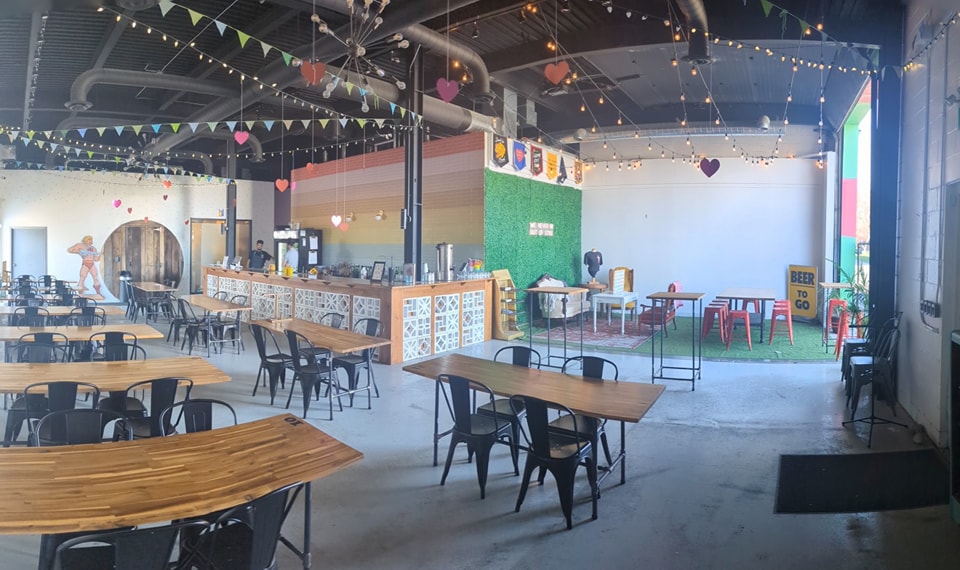
Earlier today, Pina and I headed out to the Pelee Days Inn, along with many culinary stakeholders here in Windsor-Essex, to Rebecca LeHeup of the Ontario Culinary Tourism Alliance speak about the possibility of transforming our region into a culinary tourism destination.
Some of you may remember her name from the Ontario Tourism Summit in 2009 when she handed us the Ontario Culinary Tourism Experience award (for the best culinary tourism experience in Ontario) to Pina and I for our Wine Trail Rides.
For the past 5 years through WindsorEats, Pina and I have been tooting the horn of Essex County, showcasing the incredible culinary destinations we already have and the enormous potential we possess it to it’s own residents. We are ecstatic to see this potential push by Tourism Windsor-Essex to prepare the region as a culinary destination as we always feel that working together as a collective will accomplish much more than each as individuals.
Here are 10 criteria that Rebecca stated are essential for a region to successfully be a culinary tourism destination:
1. Leadership
There are many different strategies that a region can follow, but, most of the regions studied emphasized the importance of leadership. Where there is no leadership, there are fewer regional success stories. Leadership articulates the vision to ensure the practical support by key industry stakeholders. Within this leadership there needs to be a long-term commitment to the project as well as the necessary support from key stakeholders. For example, Ottawa Tourism together with the City of Ottawa and Just Foods pooled resources and leadership in the creation of Savour Ottawa. In Prince Edward County, Economics Development and Tourism (through the Taste Trail) work closed together to develop and then market culinary experiences.
2. Market-Ready or Near-Market-Ready Culinary Products and Resources
There needs to be a critical mass of culinary tourism or tourism-related products and activities established in an emerging region. In discussions with OTMPC, this is one of the major criteria to build a successful culinary tourism destination. Although to date there are no provincial guidelines or standards for culinary tourism products, the CTC has developed a general and very broad guidebook entitled, “How-to guide: Develop a Culinary Tourism Product“, November, 2003.
Being market-ready for a single business is one thing, but, the entire destination needs to be market ready. Complimentary products to culinary tourism products may be of interest to a tourist and this must be anticipated. If there is a need for a tourist to drive or travel out of their way to participate in the culinary tourism experience then plans need to be in place to support the need for accommodation and refuelling. The most successful culinary tourism regions work collaboratively, as a community, to package and market themselves as a complete destination and not just an isolated culinary tourism experience. Being “market-ready” includes looking at infrastructure, quality standards and service issues. Infrastructure may mean parking space allotment, public washrooms and all of the minimal health and safety requirements. For more information on assessing your market-readiness, the Ministry of Tourism has a Market-Readiness Self-Assessment Tool.

3. An integrated Strategy
Destinations with activities, attractions and tourism services that complement culinary tourism products are more successful than those destinations attempting to promote a culinary tourism product in isolation. Successful culinary tourism destinations ensure that services such as accommodation, service stations, shopping and information services are readily available and operated or promoted in a way that helps unite and support culinary tourism activities. The development of culinary tourism should become part of the overarching tourism strategy of a region, the agricultural or rural strategy and the job creation strategy.
4. Partnership and Community-Based Collaboration
Throughout the literature review, successful regions worked in partnership with other businesses, local and municipal governments, tourism associations and marketing groups. This ‘all-for-one and one-for-all’ approach increased the chances for success as long as there was a common vision that would benefit all of the players. Like any organization or community-based approach with a diverse membership, passion and ambition can often blind the reality of fiscal responsibility, customer fulfilment and ongoing communication to build trust and deal with the inevitable conflict resolution required. If the vision is to design a sustainable culinary tourism region and market, strong leadership and market-ready products will not survive without a strong collaborative association built on trust, cooperation and business acumen. Creating a business plan, market strategy and communications plan for the culinary tourism region requires time and effort.

Regions should select members of the association or working group carefully in an effort to attract those members with the best skill sets, competencies and behaviours. Communication is an absolute. It is imperative to look at the entire supply chain and value chain of resources that need to understand your vision, goals and objectives. If the common vision is to be the “best culinary tourism community and/or region”, it must align itself with the local, regional and provincial tourism strategies. It will be a lot easier to be part of a wave than to be fighting “city hall” if their attention is on a completely different priority. For example, the first community meeting of Savour Muskoka included representatives from accomodation, restaurants, farmers, processors, retailers, economic development, arts and culture, festivals and events and attractions. Together they created an action plan for culinary tourism in the region.
5. Financial Support and Performance Measures
Some of the most successful global and Canadian culinary tourism regions and initiatives come as a result of long-term financial planning. Whether that funding comes from government and/or private industry, it remains critical for the sustainability of the project. Most culinary tourism products require a few years to get grounded. It is important to make sure each one of the funding or financial partners is up for the longer haul and committed to a multi-year strategy, not a one-year “pilot”. A pilot project is fine to include in a multi-year plan, but, it would be difficult to continue a cycle of generating new finds each and every year. This financial support, albeit categorized separately from the other success criteria, is really part of becoming market-ready. As with any financial support-funding, there will always be measurements required for funders to see a link between their investment and the return on investment (ROI), An important strategy is to link success measures to some sort of financial picture. A balanced scorecard approach has been seen in culinary tourism plans in the literature review. Certainly the South Australian plan uses the triple bottom line approach: economic, environmental and social measure. Most measures can be attributed some sort of dollar value. Working closely with investors/shareholders ensures support that is far more than the original investment.
6. Destinations with Good Access from Key Origin Sites
Access, especially for emerging culinary destinations will typically highway-based, although access by air and/or water might be relevant for some destinations.
7. Sufficient Market Intelligence
Having a reasonable proximity to a population-base and market that wants your product of can influence others to come to your community, region or place of business is paramount. Every destination exists only if tourists or visitors are willing to come and to experience what you have to offer. Rural communities that are not close to a major population base may have more difficulty than one that is close. Community-based festivals, trails and events are usually successful if the entire community works together to create a draw for the tourists. Understanding what motivates the market is critical; is the market attending your culinary tourism region with expressed intent – did they design their trip to explicitly consume the culinary tourism experience, or, is the market passing through and may be chance pick up a flyer and decide to spend some time away from travelling to stop and experience? The most successful regions plan for both – those who are the “epicureans”, those who are “samplers and those who are simply “driving through”.
Working with wine and tourism writers and extended tour operators seems to be the best investment for a successful region. Every tourism plan that was read during the literature review had an explicit strategy on communication. Inherent in each of them is the notion that “getting the word out beyond your borders” is imperative to drawing tourists to your region. Check out the research section of Savour Ontario’s website for information that may help your business or organization.

8. Culinary Tourism Resources Distinctive to the Region That Convey Important Messages About and Experiences of the Culture of the Region
In particular, some food or beverage products must be produced locally and are branded as being authentically local or understood to be “local”. Most successful culinary destinations will include agricultural land either in the destination or nearby. For example, the NCTrail creates a sustainable food economy for Niagara farmers by linking growers and their produce to restaurants, markets, retails shops and caterers, while encouraging value added activities on farm sites that support the agricultural integrity of the land. Tours of farms and catered events with local produce promote authenticity of the region.
9. Destination with Multiple Culinary Tourism Experiences
Every successful culinary tourism destination examined featured multiple opportunities from which the tourist could choose. Moreover, these various attractions and experiences reinforced the entire brand strategy of the entire destination and often complemented each other. For example, restaurants featuring local ingredients and wines also presented the visitor with information about visiting these producers. Culinary stories and local history can be woven into food or beverage trails, incorporated into local museums and highlighted on maps. Cooperative marketing and partnership strategies provide the visitor with more options and support the likelihood that visitors will come to your region, stay longer, spend more and return more frequently.
10. An Effective Destination Marketing Organization (DMO)
A DMO that promotes the region as a destination adn that facilitates visitors learning about and being attracted to individual culinary tourism service providers. The actual marketing activities of the DMO will vary by the region, but, most will include an active consumer marketing program, possibly a group tour program and a media relations program, including the hosting of family tours for travel.















